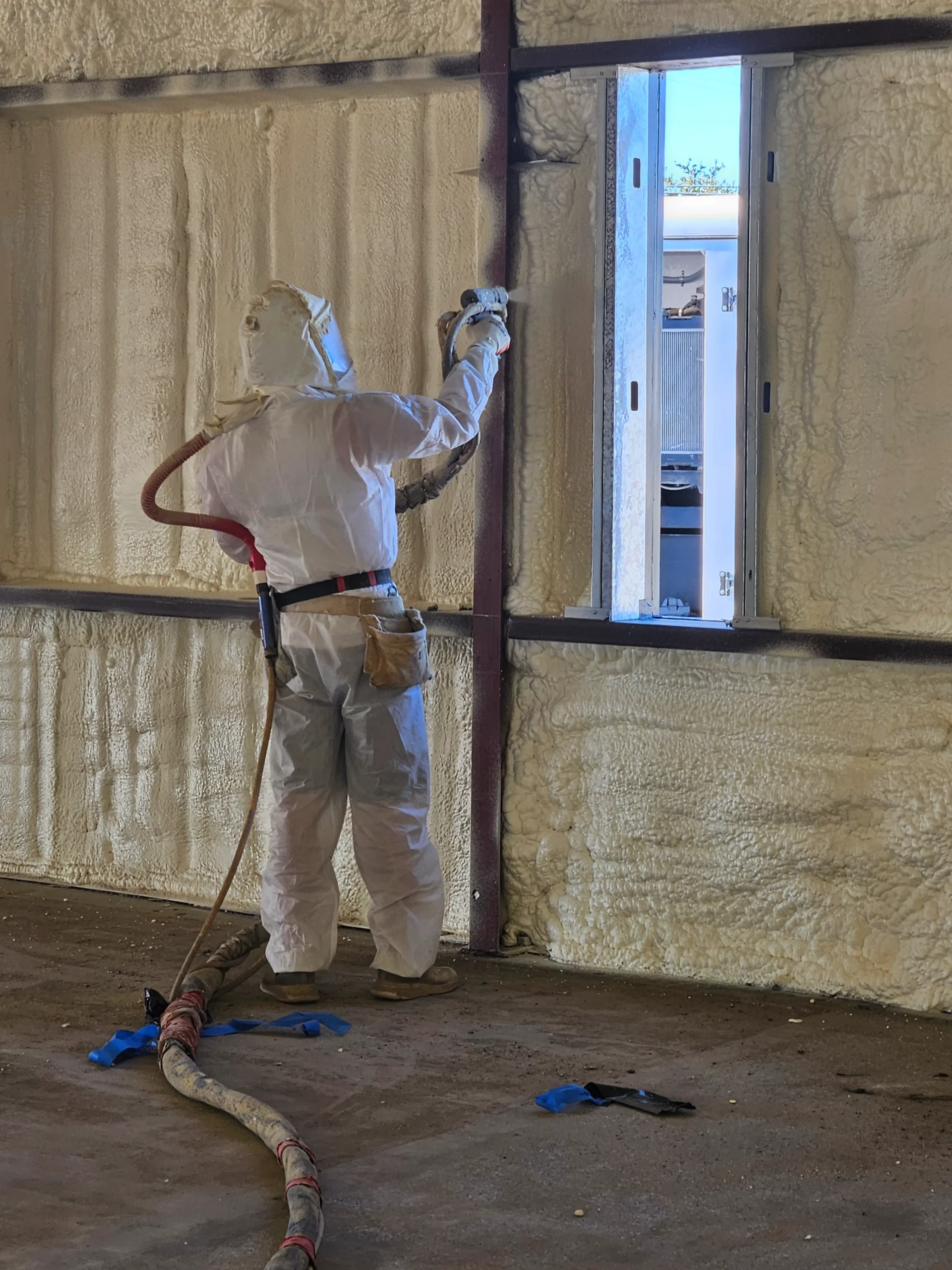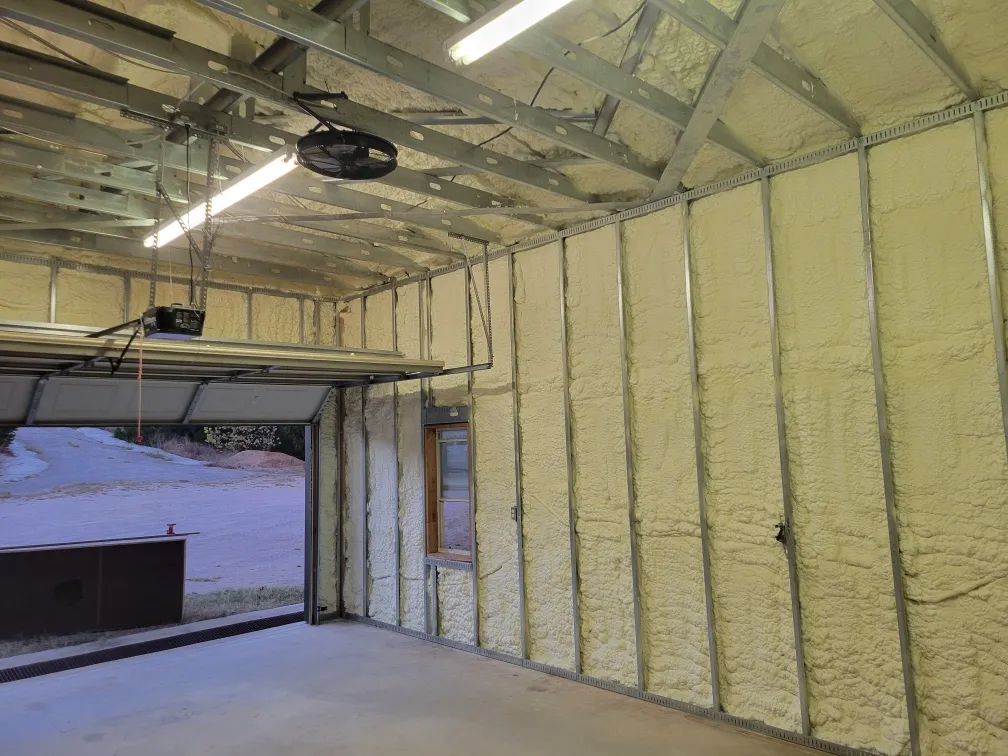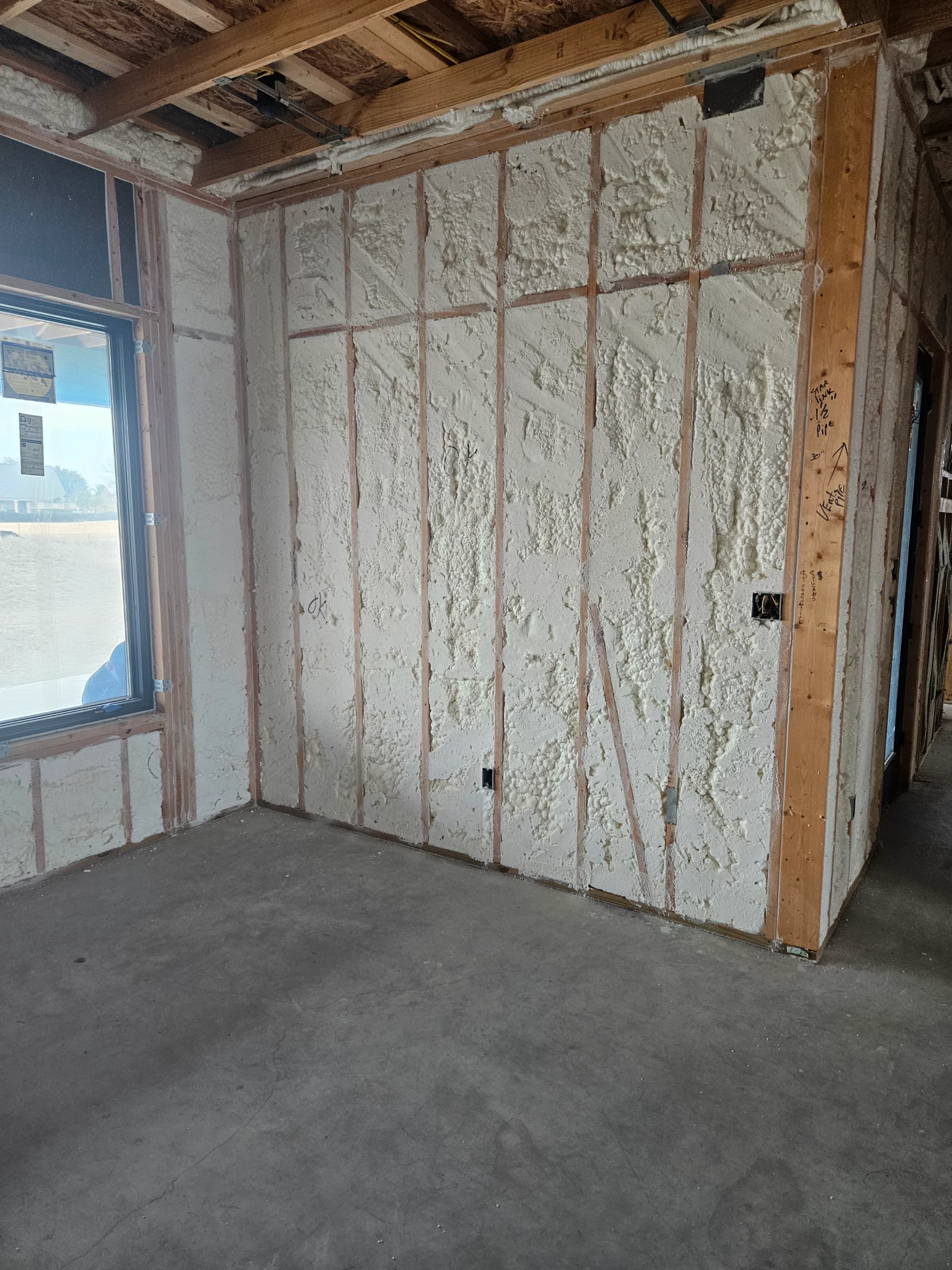

Spray foam insulation typically saves homeowners 20-50% on annual heating and cooling costs, with average savings ranging from $200-800 per year depending on home size, climate zone, and existing insulation quality. The actual savings depend on your current insulation R-value, air leakage rates, local energy costs, and installation quality.
Most homeowners recover their spray foam investment within 5-8 years through reduced energy bills, while enjoying improved comfort and indoor air quality immediately. The key factors determining your specific savings include your home’s age, current insulation type, square footage, and regional climate conditions.
This analysis draws from extensive field experience installing spray foam systems across diverse property types and climate zones, providing practical insights into real-world performance and cost-effectiveness.
Spray foam insulation creates substantial energy savings through two primary mechanisms: superior thermal resistance and comprehensive air sealing. Unlike traditional insulation materials that only address thermal transfer, spray foam simultaneously eliminates air leaks that account for 25-40% of heating and cooling costs according to the Department of Energy.
The cellular structure of spray foam expands to fill gaps, cracks, and irregular spaces that conventional insulation cannot reach effectively. This complete coverage eliminates thermal bridging and creates a continuous thermal barrier that maintains consistent indoor temperatures with less HVAC system operation.
Bonus Tip: Monitor your energy bills for three months before installation to establish a baseline, then track monthly usage afterward to calculate your actual savings percentage.
| Insulation Type | Average Annual Savings | R-Value per Inch | Air Sealing Capability |
|---|---|---|---|
| Closed-Cell Spray Foam | 30-50% | R-6.0 to R-7.0 | Excellent |
| Open-Cell Spray Foam | 20-35% | R-3.5 to R-4.0 | Very Good |
| Fiberglass Batts | 10-20% | R-2.2 to R-4.3 | Poor |
| Cellulose | 15-25% | R-3.2 to R-3.8 | Fair |
| Rigid Foam Boards | 25-35% | R-4.0 to R-8.0 | Good (with proper sealing) |
Several variables determine the actual energy savings you’ll experience with spray foam insulation. Understanding these factors helps set realistic expectations and maximize your investment return.
Older homes built before 1980 typically see the highest savings percentages because they often lack adequate insulation and have significant air leakage. Homes built after 2000 may have lower percentage savings but still benefit from improved comfort and reduced energy costs.
The condition and type of your current insulation directly affects potential savings. Homes with damaged, settled, or inadequate insulation see dramatic improvements, while properties with recently installed quality insulation may experience more modest gains.
Modern high-efficiency heating and cooling systems paired with spray foam insulation maximize energy savings. Older HVAC equipment may limit the full potential of improved insulation, though savings still occur through reduced system runtime.
Bonus Tip: Replace aging HVAC systems within two years of spray foam installation to maximize energy efficiency gains and qualify for additional utility rebates.
Climate zones significantly impact spray foam insulation savings potential. Understanding your regional conditions helps predict realistic savings and choose the optimal spray foam type.
Homes in northern regions with extended heating seasons see substantial savings from spray foam installation. The superior R-value and air sealing properties reduce heat loss during harsh winter conditions, with many homeowners reporting 40-50% reductions in heating costs.
Hot, humid climates benefit from spray foam’s moisture control properties alongside energy savings. Closed-cell spray foam prevents humid air infiltration that forces air conditioning systems to work harder removing excess moisture.
Properties in moderate climates still achieve meaningful savings, typically 20-30%, through improved temperature stability and reduced HVAC cycling. The comfort improvements often exceed the energy savings in these regions.
| Performance Metric | Closed-Cell Spray Foam | Open-Cell Spray Foam | Traditional Insulation |
|---|---|---|---|
| R-Value per Inch | 6.0-7.0 | 3.5-4.0 | 2.2-4.3 |
| Air Infiltration Reduction | 95-99% | 85-95% | 10-30% |
| Moisture Vapor Permeance | 0.5-1.0 perms | 15-20 perms | Variable |
| Expansion Rate | 30-35x liquid volume | 100-120x liquid volume | N/A |
| Adhesion Strength | 25-40 psi | 5-8 psi | Minimal |

Evaluating spray foam insulation requires analyzing multiple factors beyond initial cost. These considerations ensure you make an informed decision that aligns with your long-term goals and property characteristics.
Professional installation requires specific weather conditions, with temperature and humidity levels affecting application quality. Schedule installation during moderate weather periods for optimal results and consider temporary occupancy arrangements during curing periods.
Spray foam installation requires clear access to application areas and proper surface preparation. Remove existing insulation, repair structural issues, and ensure adequate ventilation before installation begins.
Factor in increased property value, improved comfort levels, and potential insurance premium reductions when calculating total investment return. Many utility companies offer rebates for spray foam installations that further improve cost-effectiveness.
Compare upfront installation costs against projected energy savings over your expected occupancy period. Many contractors offer financing options that allow monthly payments lower than projected energy savings.
Complete home insulation solutions for existing and new construction properties, addressing attics, basements, crawl spaces, and wall cavities with customized application techniques for maximum energy efficiency.
Large-scale insulation projects for commercial buildings, warehouses, and industrial facilities, providing enhanced thermal performance and moisture control for business property energy management.
Premium insulation solution offering maximum R-value, structural reinforcement, and moisture barrier properties for demanding applications requiring superior performance characteristics.
Seamless roofing systems that provide insulation, waterproofing, and structural support in a single application, extending roof life while improving building energy efficiency.
Spray foam insulation delivers measurable energy savings that compound over decades while providing immediate comfort improvements. The combination of thermal resistance and air sealing creates savings potential that traditional insulation cannot match.
Successful spray foam projects require professional installation, realistic savings expectations, and proper property preparation. Factor in regional climate conditions, existing insulation quality, and long-term occupancy plans when evaluating investment returns.
Choose spray foam types and installation methods based on your specific performance requirements, budget constraints, and energy savings goals rather than lowest initial cost alone.
Ready to discover your specific spray foam insulation savings potential? Professional assessment considers your property’s unique characteristics, local energy costs, and performance requirements to provide accurate savings projections.
Contact Spray Foam Tech for comprehensive property evaluation and customized insulation solutions that maximize your energy efficiency investment. Expert installation ensures optimal performance and long-term value from your insulation upgrade.
Phone: (737) 777-9590
Email: oldworldtx@hotmail.com
Schedule your property assessment today to begin reducing energy costs and improving home comfort with professional spray foam insulation solutions.
Energy savings begin immediately after installation and curing completion. Most homeowners notice reduced HVAC runtime within the first week and see measurable bill reductions in their next monthly energy statement.
Savings percentages typically remain consistent year-round, though absolute dollar amounts fluctuate with seasonal energy usage patterns. Winter heating and summer cooling periods generally show the highest dollar savings amounts.
Rising energy costs actually increase your spray foam savings in dollar terms while maintaining the same percentage reduction. Higher energy prices make insulation investments more valuable over time.
Combining spray foam with efficient HVAC systems, programmable thermostats, and LED lighting creates compound savings effects. Strategic timing of improvements maximizes utility rebates and tax incentive eligibility.
Many utility companies and government programs offer rebates for spray foam installations that meet specific efficiency standards. Federal tax credits may apply when spray foam is part of qualifying energy efficiency improvements, and some states provide additional incentives for high-performance insulation upgrades.
Quality spray foam installations maintain their thermal and air sealing properties for 80-100 years with minimal degradation. Unlike traditional insulation that settles or degrades over time, spray foam retains its R-value and structural integrity throughout its service life.
Spray foam insulation typically increases property values by 3-5% while making homes more attractive to energy-conscious buyers. Real estate professionals report that insulated homes sell faster and command premium prices in competitive markets.
Open-cell spray foam provides excellent sound dampening properties, reducing noise transmission between rooms and from outside sources. The acoustic benefits complement energy savings by creating quieter, more comfortable living environments.
Spray foam insulation requires virtually no maintenance once properly installed. Visual inspections every few years ensure the foam remains intact, and any minor repairs can be addressed by adding additional foam to damaged areas.


